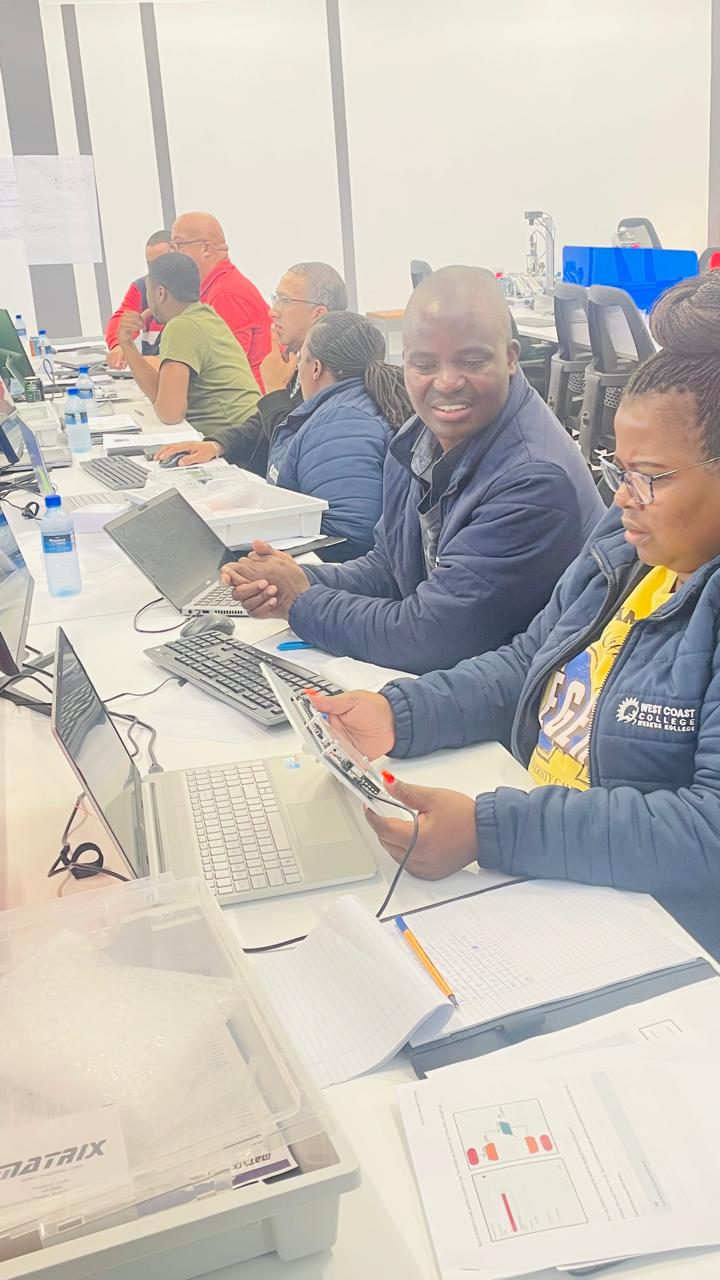
Welcome to the IT & Computer Science: Robotics and Programming Program!
This exciting and future-focused program is designed to equip students with the knowledge and practical skills needed in the fields of Information Technology, Computer Science, Robotics, and Digital Manufacturing. Whether you are passionate about building smart machines, coding software, or designing 3D models, this course is the perfect foundation for your journey into the world of 4IR (Fourth Industrial Revolution) technologies.
What You Will Learn:
-
Programming Fundamentals: Learn how to write code using beginner-friendly programming languages such as Python. Build your own programs, games, and tools using Thonny and Raspberry Pi.
-
Robotics Concepts: Understand how robots work, how to build them, and how to control them using sensors, actuators, and controllers.
-
Digital Systems & Electronics: Gain insight into the components that power modern electronics—from microcontrollers and circuits to sensors and GPIO (General Purpose Input/Output) interfaces.
-
3D Printing Technology: Discover how to design and print 3D models using software like Tinkercad and slicing tools. Learn how 3D printing supports innovation in robotics and engineering by creating custom parts and components.
-
Problem Solving and Innovation: Apply creative thinking to real-world problems using technology, automation tools, and digital fabrication methods.
-
Practical Projects: Work on hands-on projects using tools like Raspberry Pi 5, Arduino, robotic arms, and 3D printers to bring your ideas to life.
Who is this for?
This program is ideal for students who are curious, tech-minded, and ready to explore the digital world. No prior experience is needed—just a willingness to learn, create, and innovate.
Career Pathways:
Graduates of this program can pursue careers or further studies in:
-
Robotics Engineering
-
Software Development
-
IoT (Internet of Things)
-
Automation and Mechatronics
-
3D Printing and Product Design
-
Artificial Intelligence
-
IT Support and Systems
Conclusion:
Join us as we explore the building blocks of tomorrow's technology. The IT & CS: Robotics and Programming program—now with 3D printing—is your gateway to an exciting career in the digital age!
By S. Kazadi – Senior Lecturer and Education Specialist
- Lecturer: SAMUEL KAZADI
Lecturer Overview
Allow me to introduce myself: I am Ms. Siphumelelo Miya, your lecturer for this course. With years 8 years of experience in engineering education and a passion for graphics and design, I am committed to providing you with a learning environment that is both challenging and supportive. My teaching approach focuses on hands-on practice, problem-solving, and encouraging creativity in applying engineering design principles.
Assessments Overview
In the Engineering Graphics and Design (CAD) Level 3 course, your progress will be evaluated through two main components: Theoretical and Practical assessments. Both components are essential in measuring your understanding of the concepts and your ability to apply them in real-world scenarios.
1. Theoretical Component (50%)
The Theoretical Component will assess your understanding of the foundational principles and concepts in Engineering Graphics and Design. This includes topics such as isometric drawings, assembly drawings, dimensioning methods, and the fundamentals of CAD.
Assessment Breakdown:
- Class Tests
- Quizzes
- Assignments
- Group Discussions and Case Studies
- End-of-Term Theory Exam
Weighting:
1. Theoretical assessments will account for 50% of your final grade.
2. Practical Component (50%)
The Practical Component focuses on your ability to apply what you have learned through hands-on work. This involves creating engineering drawings, both manually and using CAD software, as well as demonstrating your technical skills in practical exercises and projects.
Assessment Breakdown:
- Practical Exercises (e.g., drawing isometric and assembly drawings)
- CAD Projects (e.g., creating detailed drawings using CAD software)
- Practical Examinations
- Portfolio of Evidence (PoE) – A collection of your completed practical work and projects.
Weighting:
Practical assessments will account for 50% of your final grade.
Final Mark Calculation:
Theoretical Component: 50%
Practical Component: 50%
Final Mark:
Your final mark will be calculated by combining both components, each contributing 50%.
These assessments are designed to ensure that you grasp both the theoretical knowledge and practical skills required in Engineering Graphics and Design. Let’s focus on excelling in both areas to achieve the best possible results!
- Lecturer: Siphumelelo Miya